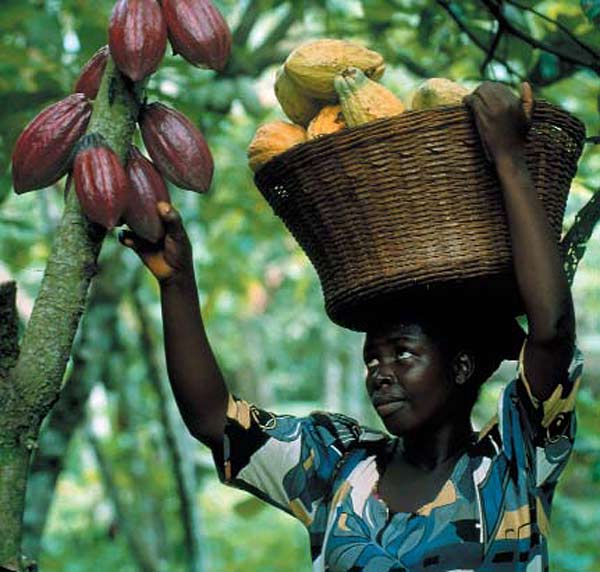Food insecurity in Africa has for too long been muddled with hunger, conjuring up images of famines in Ethiopia in the 1980s, Malawi in the 1990s and more recently in Niger and Somali.
Food insecurity can be characterised as a continuum, from its most severe state of starvation, acute enduring hunger, chronic persistent hunger to hidden hunger.
In a recent article I introduced a new framework that visualises levels of food insecurity, and the concomitant consequences and responses as a continuum. One potential benefits of using the continuum as a diagnostic tool is an increased focus on less extreme but nevertheless urgent manifestations of food insecurity.
The tool can also bring about more accurate targeting of interventions and better follow-up, and improved accountability for donor spending.
The tool provides a visual concept of the stages of food insecurity and emphasises the likelihood that food security experiences are not static but can improve or deteriorate. It also provides a guide on classifying individuals by how well nourished they are and what strategies they employ to meet their daily food requirements.
For each stage on the continuum, suggestions for public programmes to address the specific level of food insecurity are provided.
African famines have brought awareness
Food insecurity is far more complex than simply overcoming severe hunger. The concept of food insecurity has been around since the 1940’s. But it only drew international attention in 1974 when world stocks hit record low levels, sparking international panic. The last famine outside of Africa was in China in the 1960s.
Since then, much has been done to ensure stable global food supplies and stocks for food aid emergencies. Modern food shortages are not caused by natural disasters. Instead, natural disasters are often only the tipping point for famine within a fragile context of social, economic and political crises.
Recently African famines have led to the understanding that food security rests not only in having enough food but that even in the midst of plenty, people can still struggle. This is especially the case when people are trying to acquire enough food, not only to ward off hunger but to ensure adequate nourishment.
In an increasingly globalised world, food can be moved over considerable distances to meet consumer demand. This affords those with money endless variety in the market place. But for those battling poverty, getting enough of the basic staples to feed their families is a constant struggle.
Even where people are able to buy or obtain adequate basic supplies of starchy staples, a different form of hunger exists. Hidden hunger is not easily observable. It is the result of eating monotonous diets that lack the essential nutrients for children to thrive and develop and adults to be productive.
Such diets are often low in protein as well as essential nutrients available from a variety of fruit and vegetables. Globally and in Africa, more people suffer from micronutrient deficiencies than hunger itself. And:
Such deficiencies also exist in the presence of over-weight.
How families cope
Understanding what households do when faced with inadequate income to buy nutritious food provides clues to how to design programmes to deal with food insecurity and the rising rates of over-weight people.
Food insecurity is not a static state of being. A person’s or household experience of food insecurity changes over time – be it a lifetime or a month.
Fluctuation in food supply and dietary quality are a concern because sound nutrition is only achieved when adequate amounts of essential nutrients are eaten on a daily basis. These nutrient requirements are determined by the age, sex, weight, height and level of activity of a person. Household meal patterns change depending on the availability of foods that households produce.
What is available and affordable in the marketplace as well as income also influence people’s eating habits. This leads to cycles of feasting and famine over the week, month or agricultural seasons depending on geographical location and nature of work. Feeding a family takes careful budgeting, planning and management at household level. Even more so when incomes are low.
Trying to manage the problem
Households anticipate risks related to income or food provision and routinely act to avoid or manage these risks. At the first signs of food shortages, subtle changes are made such as stretching meals by substituting cheaper ingredients or bulking up meals with legumes or cabbage. Such strategies compromise the nutritional value of meals.
Others may switch to less processed raw foods, but these require longer cooking periods and so cost more in terms of fuel. Others may turn to energy-dense “fast foods” that are becoming more accessible and often cost less than healthy foods. Some may skip meals, eat less variety or simply reduce food quantities. Where such practices negatively affect nutritional status, households and their members slip deeper into food insecurity.
But not all lead to weight loss. Weight gain due to poor food choices and behaviours is also possible. Some of these responses may lead to continued patterns of poor food intake and others compromise a household’s ability to cope in future.
Being able to identify the severity of food insecurity is important in the design of appropriate actions to assist food insecure households and populations. We need to understand that food insecurity is not only a matter of hunger but may have multiple manifestations.
Our actions therefore need to pay careful attention to ensuring constant food supply and access to food through sustainable income sources. There is a need also to support households in managing their resources better, not just to stave off hunger but to provide nutritious meals every day.
Sheryl L Hendriks receives funding from the National Research Foundation.
This article was originally published on The Conversation.

